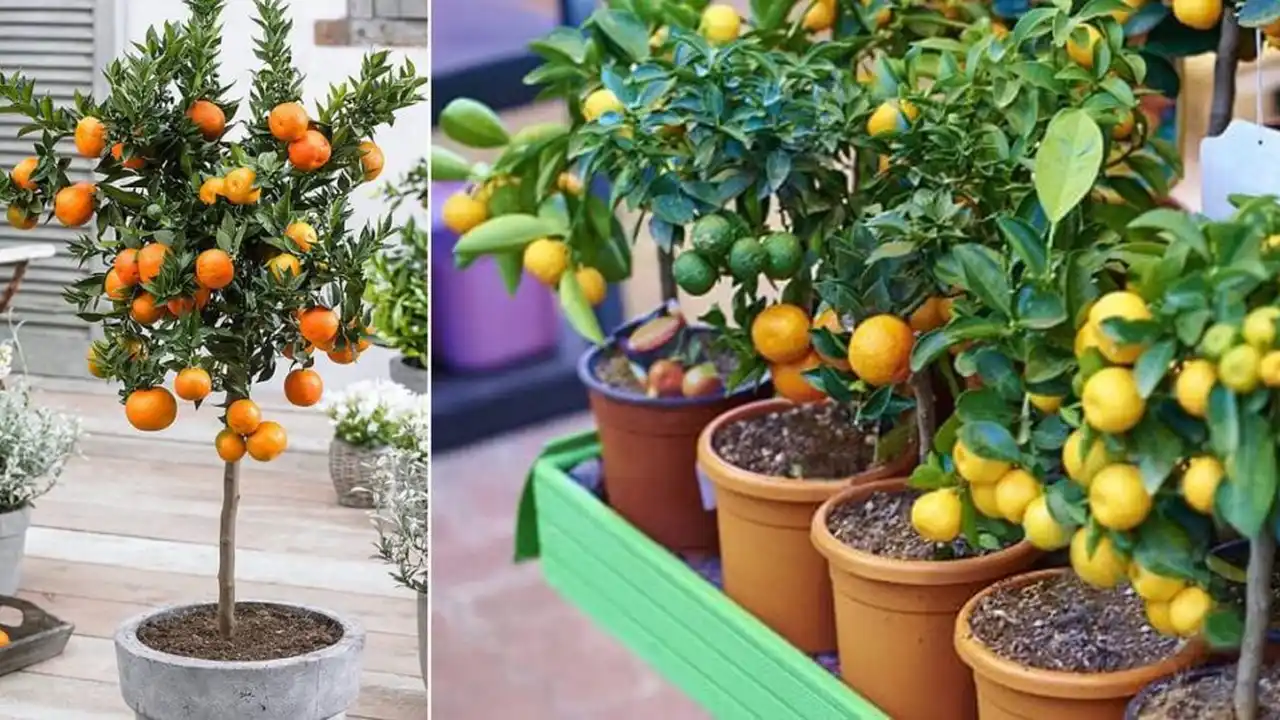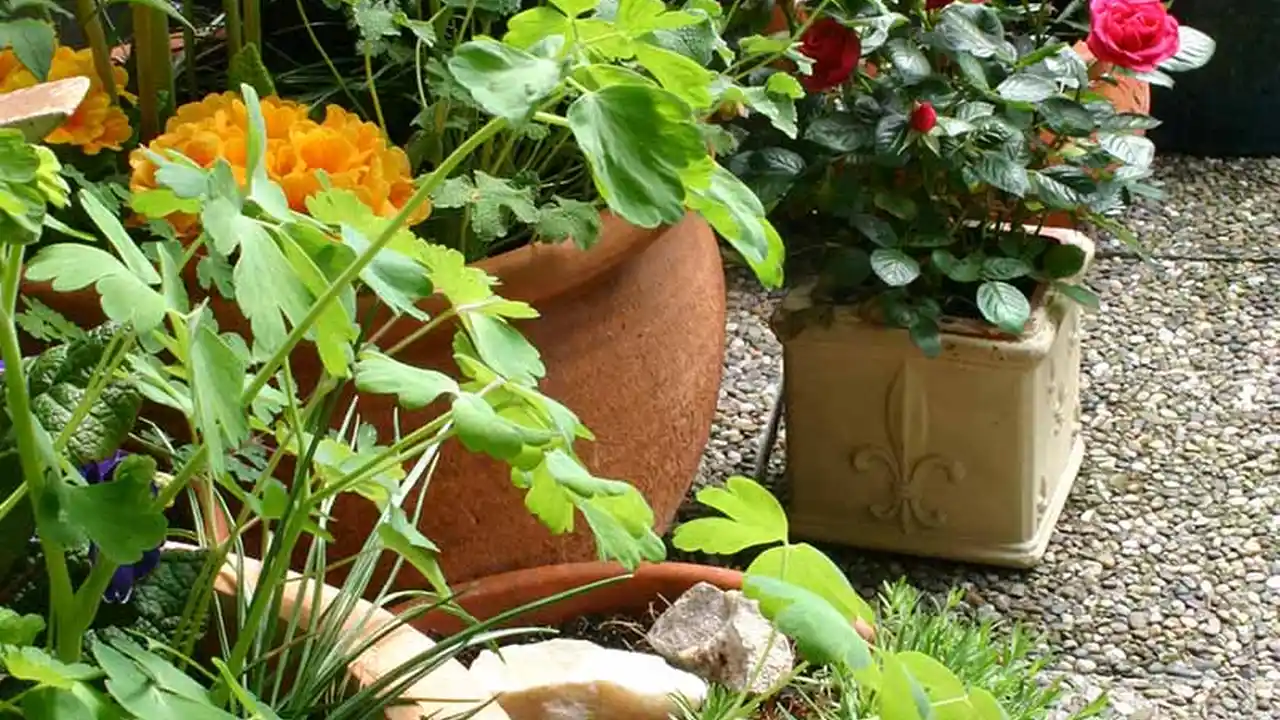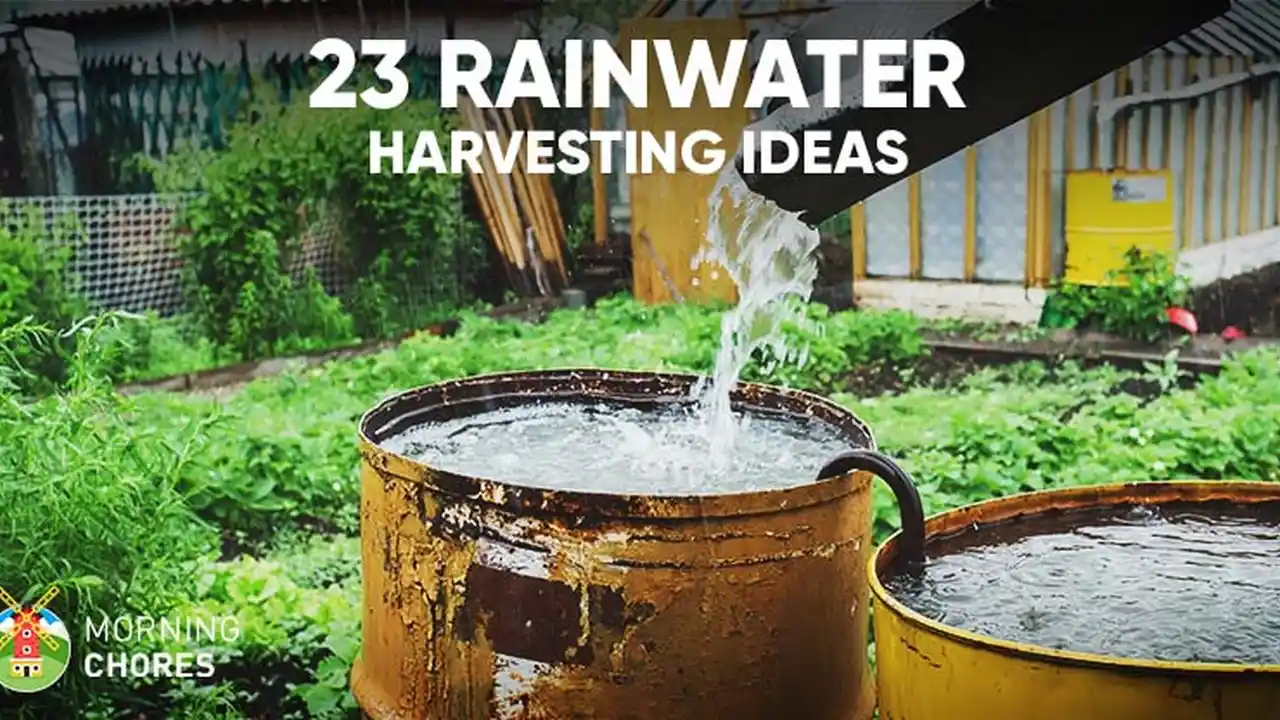Budget Gardening Tips 7 Ways to Save Money
Discover 7 practical tips for gardening on a budget. Grow a beautiful garden without breaking the bank.

Discover 7 practical tips for gardening on a budget. Grow a beautiful garden without breaking the bank.
Budget Gardening Tips 7 Ways to Save Money
Gardening is a wonderfully rewarding hobby, offering fresh produce, beautiful blooms, and a connection to nature. However, it can sometimes feel like an expensive endeavor, especially when you're just starting out. But fear not! You don't need a massive budget to create a thriving garden. With a little creativity, resourcefulness, and smart planning, you can enjoy all the benefits of gardening without breaking the bank. This guide will walk you through seven practical ways to save money and still achieve a beautiful, productive garden.
1. Start from Seed Not Seedlings
One of the biggest expenses for new gardeners is often buying established seedlings or young plants from nurseries. While convenient, these can quickly add up, especially if you're planning a larger garden. Starting your plants from seed is significantly cheaper and offers a wider variety of plant options. A packet of seeds, which might cost a few dollars, can yield dozens, if not hundreds, of plants, whereas a single seedling can cost the same amount.
Why Choose Seeds for Budget Gardening
- Cost-Effectiveness: Seeds are incredibly cheap per plant.
- Variety: You'll find a much broader selection of plant varieties, including heirloom and unusual types, when buying seeds.
- Control: You have full control over the growing conditions from day one, ensuring healthy, strong plants.
Seed Starting Essentials on a Budget
You don't need fancy equipment to start seeds. Here are some budget-friendly options:
- Seed Starting Mix: While you can buy specialized seed starting mix, you can also create your own by mixing equal parts peat moss (or coco coir), perlite, and vermiculite. This is often cheaper in bulk.
- Containers: Repurpose household items! Egg cartons, toilet paper rolls, newspaper pots, yogurt cups, and even plastic take-out containers with drainage holes poked in the bottom make excellent seed starting pots.
- Lighting: If you don't have a sunny windowsill, a simple fluorescent shop light (like the Feit Electric 2-Foot LED Grow Light, often around $20-$30) can provide adequate light for seedlings. For more serious growers, consider a basic LED grow light like the Monios-L T8 LED Grow Light (around $40 for a 4-pack), which offers full spectrum light for stronger growth.
Product Comparison: Seed Starting Lights
| Product | Type | Approx. Price | Pros | Cons | Best Use Case |
|---|---|---|---|---|---|
| Feit Electric 2-Foot LED Grow Light | Fluorescent LED | $25 | Affordable, easy to set up, good for basic seedlings. | Lower intensity, may not be sufficient for all plants. | Beginners, small-scale seed starting. |
| Monios-L T8 LED Grow Light (4-pack) | Full Spectrum LED | $40 | Higher intensity, full spectrum, good value for multiple lights. | Requires more setup, slightly higher initial cost. | More serious seed starting, larger quantities. |
2. Embrace Composting and DIY Soil Amendments
Healthy soil is the foundation of a successful garden, but buying bags of compost and soil amendments can quickly deplete your budget. The good news is that you can create your own nutrient-rich compost for free using kitchen scraps and yard waste.
Benefits of Homemade Compost for Gardeners
- Free Nutrients: Compost provides essential nutrients to your plants, reducing the need for synthetic fertilizers.
- Improved Soil Structure: It enhances soil drainage in heavy clay soils and improves water retention in sandy soils.
- Waste Reduction: Divert organic waste from landfills, contributing to a more sustainable lifestyle.
Budget Composting Solutions
- DIY Compost Bin: You don't need a fancy compost tumbler. A simple pile in a corner of your yard, or a bin made from old pallets, chicken wire, or even a repurposed trash can with holes drilled in it, will work perfectly.
- Leaf Mold: Collect fallen leaves in the autumn and pile them up. Over a year or two, they will break down into a fantastic soil amendment called leaf mold, which is excellent for improving soil structure.
- Coffee Grounds and Eggshells: These are fantastic additions directly to your garden beds. Coffee grounds add nitrogen and improve soil structure, while crushed eggshells provide calcium, which can help prevent blossom end rot in tomatoes.
Product Recommendation: Budget Compost Bin
While DIY is cheapest, if you prefer a ready-made option, the Good Ideas Compost Wizard Jr. (around $100-$120) is a popular choice. It's a tumbling composter that makes turning easy and speeds up the composting process. For a more basic, stationary bin, the Lifetime 65-Gallon Compost Bin (around $70-$90) is a good, durable option.
3. Propagate Plants from Cuttings and Divisions
Why buy new plants when you can create them for free from existing ones? Many plants can be easily propagated from cuttings or by dividing established clumps. This is a fantastic way to expand your garden, fill in empty spaces, or even share plants with friends and neighbors.
Easy Plants to Propagate for Free
- Herbs: Rosemary, mint, basil, and oregano are incredibly easy to root from cuttings in water or soil.
- Perennials: Hostas, daylilies, irises, and many ornamental grasses can be divided every few years, giving you multiple new plants.
- Shrubs: Hydrangeas, forsythia, and many other shrubs can be propagated from softwood or hardwood cuttings.
- Succulents: Most succulents can be propagated from a single leaf or stem cutting.
Propagation Techniques for Budget Gardeners
- Cuttings: Take a 4-6 inch cutting from a healthy stem, remove the lower leaves, and place it in water or a moist potting mix. Rooting hormone (like Garden Safe TakeRoot Rooting Hormone, around $5-$7) can increase success rates but isn't always necessary.
- Division: For clumping perennials, dig up the plant and gently pull or cut the root ball into smaller sections, ensuring each section has roots and some foliage.
4. Repurpose and Recycle for Garden Containers and Decor
Don't rush to the garden center for new pots and decor. Look around your home and neighborhood for items that can be repurposed into charming and functional garden elements. This not only saves money but also adds a unique, personal touch to your garden.
Creative Repurposing Ideas for Your Garden
- Containers: Old tires (painted), plastic milk jugs (cut in half), tin cans (with drainage holes), wooden crates, old buckets, and even worn-out shoes can become quirky planters. Just ensure they have adequate drainage.
- Garden Decor: Broken pottery can be used for mosaic stepping stones or as drainage crocks in pots. Old ladders can become vertical planters. Wine bottles can be used as borders or even self-watering wicks.
- Raised Beds: Instead of buying expensive raised bed kits, consider using reclaimed wood, cinder blocks, or even large rocks to create your garden beds.
Product Idea: DIY Raised Bed Materials
While not a product, consider sourcing materials like untreated lumber scraps from construction sites (with permission!), or inexpensive cinder blocks from a local hardware store (around $1-$2 each). These can be stacked to create durable and affordable raised beds.
5. Shop Smart and Seek Out Deals for Gardening Supplies
Even when you need to buy something, there are ways to do it without paying full price. Being a savvy shopper can save you a significant amount of money on gardening essentials.
Tips for Smart Shopping and Finding Garden Deals
- End-of-Season Sales: This is prime time to buy seeds, bulbs, tools, and even some perennial plants at heavily discounted prices. Nurseries want to clear out inventory before winter.
- Discount Stores and Dollar Stores: You can often find basic gardening gloves, small hand tools, and even seed packets at very low prices. Quality might vary, but for simple tasks, they can be perfectly adequate.
- Online Marketplaces: Check Facebook Marketplace, Craigslist, or local online groups for used gardening tools, pots, and even free compost or manure from local farms.
- Seed Swaps: Participate in local seed swap events. This is a fantastic way to get new varieties for free and connect with other gardeners.
- Bulk Buying: If you have storage space and a large garden, buying certain items like potting mix, compost, or even seeds in bulk can be more cost-effective. Consider splitting bulk purchases with gardening friends.
Product Comparison: Budget Hand Tools
| Product | Approx. Price | Pros | Cons | Best Use Case |
|---|---|---|---|---|
| Fiskars Ergo Trowel | $10-$15 | Durable, comfortable handle, good for digging and planting. | Slightly higher price than basic options. | Reliable everyday use. |
| Generic Dollar Store Trowel | $1-$3 | Extremely cheap, good for very light duty. | Less durable, may bend or break easily. | Occasional light tasks, emergency backup. |
6. Grow What You Eat and Prioritize High-Yield Crops
One of the best ways to save money through gardening is to grow food that you would otherwise buy at the grocery store. Focus on crops that are expensive to buy or that you consume frequently.
Maximizing Your Edible Garden for Savings
- High-Value Crops: Think about what's expensive at the supermarket. Herbs, leafy greens (like lettuce and spinach), tomatoes, bell peppers, and berries often offer significant savings when grown at home.
- High-Yield Crops: Some plants produce a lot from a small space. Zucchini, bush beans, and cherry tomatoes are examples of prolific producers.
- Succession Planting: Plant small batches of quick-growing crops (like lettuce or radishes) every few weeks to ensure a continuous harvest throughout the season, rather than one large harvest.
- Perennial Edibles: Consider planting perennial herbs (rosemary, thyme, chives), fruit bushes (blueberries, raspberries), or even small fruit trees. These provide harvests year after year with minimal effort once established.
7. Conserve Water and Energy in Your Garden
Water and energy costs can add up, especially in larger gardens or during dry spells. Implementing water and energy-saving practices not only helps your budget but also benefits the environment.
Water and Energy Saving Tips for Gardeners
- Mulching: Apply a 2-4 inch layer of organic mulch (wood chips, straw, shredded leaves) around your plants. Mulch suppresses weeds (reducing the need for weeding tools or herbicides) and significantly reduces water evaporation from the soil.
- Drip Irrigation or Soaker Hoses: These systems deliver water directly to the plant roots, minimizing waste from evaporation and runoff compared to overhead sprinklers. A basic soaker hose kit (like the Gilmour Flat Soaker Hose, around $20-$30 for 50ft) is an affordable starting point.
- Rain Barrels: Collect rainwater from your roof in a rain barrel. This free, chlorine-free water is excellent for your plants and reduces your water bill. A basic rain barrel (like the Good Ideas Rain Wizard 50-Gallon Rain Barrel, around $100-$150) can pay for itself over time.
- Watering Wisely: Water deeply and less frequently to encourage deep root growth. Water in the early morning or late evening to minimize evaporation.
- Hand Watering: For smaller gardens, hand watering with a watering can or hose nozzle allows you to target water precisely where it's needed, preventing waste.
Product Comparison: Water Conservation Tools
| Product | Approx. Price | Pros | Cons | Best Use Case |
|---|---|---|---|---|
| Gilmour Flat Soaker Hose (50ft) | $25 | Affordable, easy to set up, efficient water delivery. | Can be prone to kinks, may not last as long as heavier duty options. | Small to medium garden beds, row planting. |
| Good Ideas Rain Wizard 50-Gallon Rain Barrel | $120 | Collects free rainwater, reduces water bill, eco-friendly. | Initial investment, requires downspout connection. | Sustainable watering, areas with water restrictions. |
By implementing these budget-friendly strategies, you'll find that gardening doesn't have to be an expensive hobby. Instead, it can be a source of joy, fresh food, and beautiful surroundings, all while being kind to your wallet. Happy gardening!
:max_bytes(150000):strip_icc()/277019-baked-pork-chops-with-cream-of-mushroom-soup-DDMFS-beauty-4x3-BG-7505-5762b731cf30447d9cbbbbbf387beafa.jpg)






